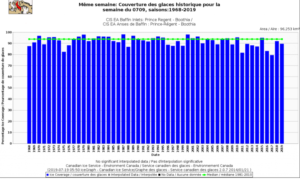by Jo Moreau, 17 juillet 2019 in Belgotopia
Quel est le principe de fonctionnement du « peer review », ou révision par les pairs
Nous avons déjà pu apprécier à quel point la publication d’un article dans une revue scientifique pratiquant le « peer review » constitue pour certains le sommet, et même la condition sine qua non pour se voir accorder l’autorisation d’émettre un avis sur un sujet donné (dans notre cas : le réchauffement, pardon, les changements climatiques).
L’exemple le plus récent est illustré par la position d’un réseau social bien connu qui émet un avis à la limite calomnieux à l’égard d’un physicien par ailleurs professeur d’université, qui a fait l’objet de mon article précédent : https://belgotopia.com/2019/07/15/menaces-ouvertes-sur-les-ecrits-giecosceptiques/
Comment cela fonctionne-t-il ? Le scientifique (ou le groupe de scientifiques) soumet son étude à l’éditeur de la revue qu‘il aura choisie (ou à plusieurs d‘entre eux). Il s’agit souvent du premier filtre, l’éditeur jugeant si l’étude est ou non conforme à la ligne éditoriale de la revue. Le physicien Edwin BERRY vient encore d’en faire l’expérience. Son étude « Le CO2 d’origine humaine a peu d’effet sur le CO2 présent dans l’atmosphère » a été refusée par l’American Journal of Climate Change sous le seul et unique motif que « La conclusion de cet article est complètement opposée au consensus de la communauté universitaire ». Evidemment, le fait que Ed BERRY soit un GIECosceptique affirmé n’aura pas favorisé sa démarche …
…

by P. Gosselin, July 19, 2019 in NoTricksZone
Our German skeptic friend Snowfan here keeps us up to date on the latest ODEN “Ship of Fools” attempt to travel across an Arctic that is supposed to be ice-free by now.
The incentive to cross the Arctic passages in the summer is huge. Doing so would mean at least a week of fame with the media blaring out your name along with grossly hyped headlines of an Arctic ice meltdown due to global warming. One of these years, a ship might get lucky and manage to get through the Northwest Passage.
…
Also defying the models is the extent of ice cover for July 9 at the Baffin inlets Regent – Boothia. Over the last 50 years, there’s been little trend change:

Source: Canadian Ice Service
by Euractiv Network, July 19, 2019
The Capitals brings you the latest news from across Europe, through on-the-ground reporting by EURACTIV’s media network. You can subscribe to the newsletter here.
///
The Polish government has said ensuring a “good post” in the next European Commission was a precondition to support Ursula von der Leyen to become the EU executive’s chief, according to deputy Prime MinisterJacek Sasin and government spokesman Piotr Müller.
EURACTIV Poland has been reporting for several weeks that Warsaw may be interested in a post related to energy issues, and Sasin confirmed the government’s aspirations for the energy post in an interview with TVN24.
Read also:
At the beginning of June, WysokieNapiecie.pl, a website which covers energy issues, revealed that Competition Commissioner Margrethe Vestager and liberal spitzenkandidat offered the Polish government the post of commissioner for energy in return for support in her fight for the top EU job. The only condition was to find a woman.
The name of Poland’s minister for technology and entrepreneurship Jadwiga Emilewicz, who is sceptical towards coal, has repeatedly popped up.
Vestager is now out of the race but things have not changed much: Polish government officials are touting Emilewicz and demanding the energy portfolio, and Vestager will remain in the Commission as a vice-president, which may give her power to influence the composition of the new executive.
In an interview with EURACTIV.com earlier this week, Foreign Minister Jacek Czaputowicz said Poland was looking for an “economic” post. “We know how to do it, we are developing quickly, and we have one of the highest paces of economic development.
…
by Oregon State University, July 18, 2019 in ScienceDaily
Warming temperatures and changes in ocean circulation and salinity are driving the breakup of ice sheets in Antarctica, but a new study suggests that intense storms may help push the system over the edge.
A research team led by U.S. and Korean scientists deployed three moorings with hydrophones attached seaward of the Nansen Ice Shelf in Antarctica’s Ross Sea in December of 2015, and were able to record hundreds of short-duration, broadband signals indicating the fracturing of the ice shelf.
The “icequakes” primarily took place between January and March of 2016, with the front of the ice sheet calving into two giant icebergs on April 7. The day the icebergs drifted away from the shelf coincided with the largest low-pressure storm system the region had recorded in the previous seven months, the researchers say.
Results of the study are being published this week in Frontiers in Earth Science.
…
Journal Reference:
- R. P. Dziak, W. S. Lee, J. H. Haxel, H. Matsumoto, G. Tepp, T.-K. Lau, L. Roche, S. Yun, C.-K. Lee, J. Lee, S.-T. Yoon. Hydroacoustic, Meteorologic and Seismic Observations of the 2016 Nansen Ice Shelf Calving Event and Iceberg Formation. Frontiers in Earth Science, 2019; 7 DOI: 10.3389/feart.2019.00183
by J.C. Maurin, 19 juillet 2019 in ScienceClimatEnergie
Effet Bombe et Modèles du GIEC
Les prévisions du climat sont générées par des modèles informatiques. Leurs concepteurs pensent pouvoir décrire l’état moyen de l’atmosphère en 2100, en prenant comme principale donnée d’entrée, le taux futur de CO2 qui constituerait donc le ‘bouton de commande’ du climat.
Il y a deux étages de modélisation : on commence par prévoir le taux de CO2 en 2100 avec des modèles sélectionnés par le GIEC (ces modèles « IRF » du GIEC sont l’objet de l’article).
Cette prévision constitue ensuite l’entrée du second étage, à savoir les modèles types « échanges radiatifs » ou « effet de serre » qui ne sont pas traités ici (mais on peut consulter ceci).
Le présent article ( qui est la suite de deux autres ici et ici) compare la réponse impulsionnelle théorique de ces modèles « IRF » avec la réponse impulsionnelle observée du 14CO2(effet Bombe).
…
La géologie, une science plus que passionnante … et diverse


